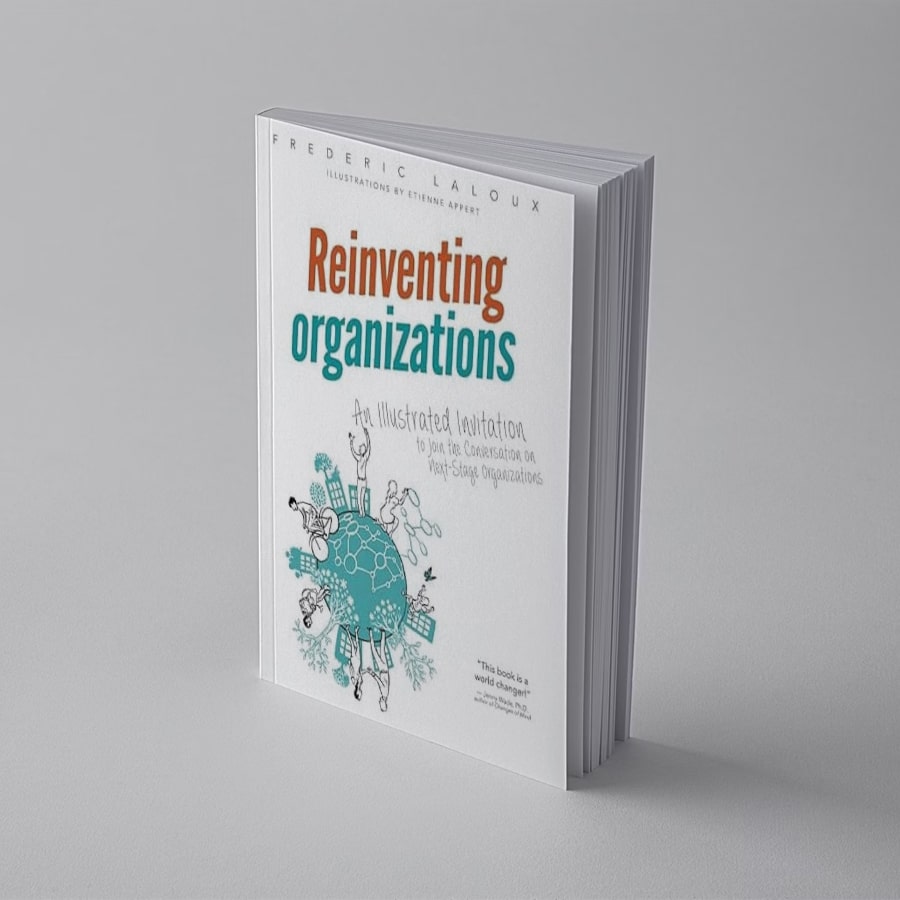A Reading That Challenges Our Ideas on Management
Have you ever imagined a company without a hierarchy? A workplace where every employee is autonomous and actively participates in decision-making? This is exactly what Frédéric Laloux proposes in his book Reinventing Organizations.”
The End of the Hierarchical Pyramid: A Utopia?
In his work, the author presents various traditional organizational structures and their limitations, and then introduces us to the organization of the future, which completely eliminates the hierarchical pyramid.
Yes, you read that correctly. The Teal model presented in this book completely eliminates the pyramid. The end result is an ecosystem made up of several self-managed teams.

Are you skeptical?
Do you have doubts about the feasibility of this new approach? You’re right to. I did too at the beginning of my reading. Having spent most of my career in the aerospace industry, I am comfortable with traditional structured companies with levels of hierarchy.
The Teal Organization in Action
My initial skepticism faded as I read on. Indeed, the author supports his theory with concrete examples from companies in various fields, including manufacturing. It seems that this organizational model is possible when applied correctly.
A Radical Transformation of Management Practices
However, it requires a change to almost all management practices as we know them, which is no small task. It involves a complete transformation of how we operate.
For example:
- Each employee proposes the salary increase they consider fair. The final result is then reviewed by a committee. The committee has no final authority, and a mediation process is available to resolve disputes.
- Sales functions are not compensated by commission.
- There is no “boss” as such. Groups can refer to coaches or form peer committees as needed.
- Employees can take initiatives on their own for major projects, such as purchasing a new machine, but they must consult experts (such as finance and engineering), their peers, and those affected by the change.
The Strengths of “Reinventing Organizations”
- An Accessible and Engaging Format: I really appreciated the format. The book is filled with original illustrations that convey the message in a simple and humorous way (I found myself in the caricature of skeptical people ;-).
- A Concrete Approach: Despite the philosophical nature of the reflection, the author illustrates the concepts in a concrete and pragmatic manner.
- Inspiring Examples: It includes several examples of companies that have successfully adopted the Teal model.
- Morning Star in California
- Buurtzorg in the Netherlands
- Favi in France
My Opinion: An Inspiring Read That Raises Questions
Although I greatly appreciated the innovative aspect of the model and the research demonstrating its feasibility, I remain skeptical about its application in large companies.
Fields that are strictly regulated, such as aerospace, are legally required to have individuals responsible for compliance with current standards.
Potential Challenges:
- How can regulatory compliance be ensured without a clear hierarchical structure?
- Is there a real risk of diluting responsibilities?
- Is this model suitable for all types of organizations?**
Conclusion: An Essential Read for Rethinking Work

Whether you are a manager, entrepreneur, or simply curious about new management trends, Reinventing Organizations deserves your attention. This book will encourage you to question your assumptions and imagine new possibilities for the world of work.
Triba Rating: 4/5 – An inspiring and insightful read, although some questions remain unanswered.**
If there’s anything else you’d like translated, feel free to let me know!
Further Reading
Explore Frédéric Laloux’s insights on his official website.
Have you ever experienced or observed management practices inspired by the Teal model? Share your experiences in the comments!
Generative AI was used to optimize this article for SEO.

